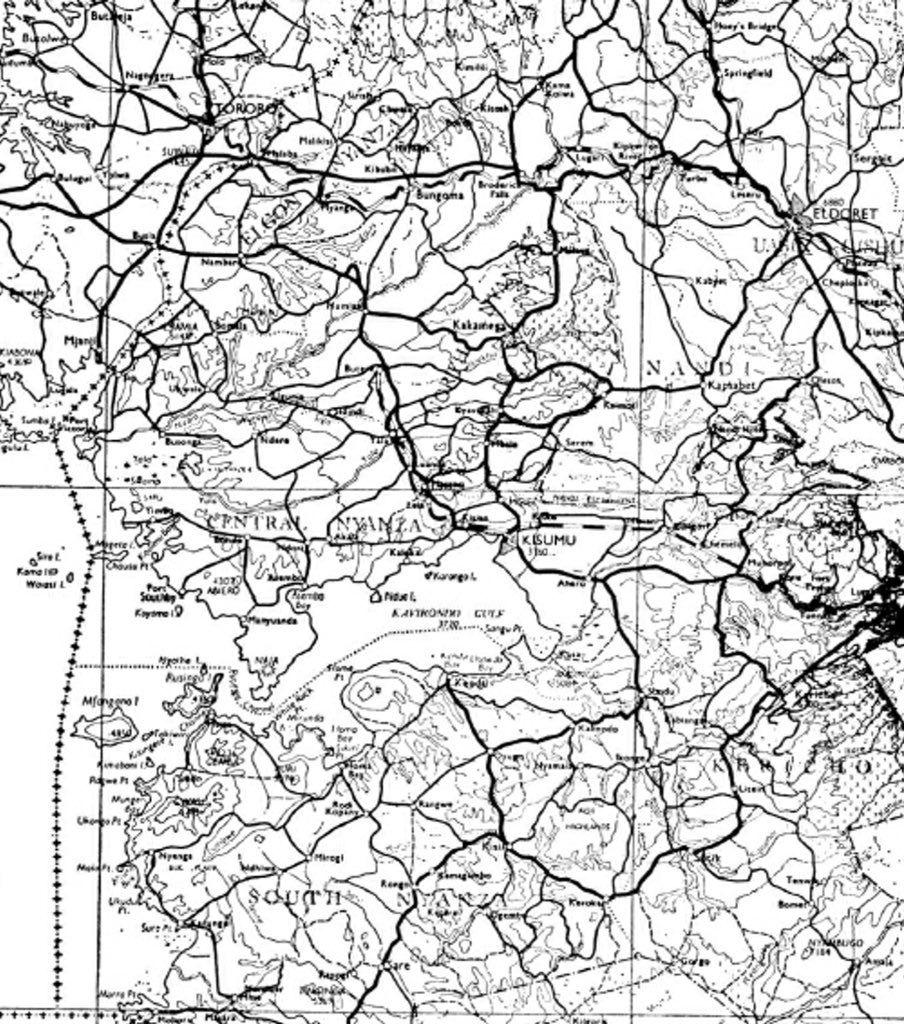Discover and read the best of Twitter Threads about #historykethread
Most recents (24)
#HistoryKeThread: Seen here conferring with then President Moi, Mr. Burudi Nabwera is a former diplomat, MP, Asst. Minister and later not only Secretary General of KANU in its heydays, but also a Minister for State. 

Last year, the alumnus of Makerere University released his biography, ‘How It Happened’, a book that should be a good read for anyone interested in the politics of Kenya during the single-party era. 

On 7th of October 1990, Mr. Nabwera caused a stir when he announced that the government would not prosecute anyone for the murder of former minister Robert Ouko. The report by Scotland Yard’s detective John Troon, Nabwera argued, had not named any killers.
Published in San Francisco, United States, Western Field was an American west coast monthly sports hunter magazine.
The magazine featured stories about the hunting exploits of various American hunters both at home and overseas.
The magazine featured stories about the hunting exploits of various American hunters both at home and overseas.

One such adventurer was Elmer Davies, who spent some time among the Wakamba, Wataveta and the Agîkûyû in the period until sometime in early 1904.
#HistoryKeThread: The Wadavida (Taita) Of Yore
In 1890, author Thomas Stevens authored the book, Scouting for Stanley.
In 1890, author Thomas Stevens authored the book, Scouting for Stanley.

The book is an account of the time Thomas spent in East Africa, where he had been sent to join in the search for legendary explorer Henry Morton Stanley.
#HistoryKeThread: When Colonial Officials Adopted Locals As Mistresses
Hell hath no fury like a randy colonial officer stationed miles away from conjugal comfort.
Hell hath no fury like a randy colonial officer stationed miles away from conjugal comfort.
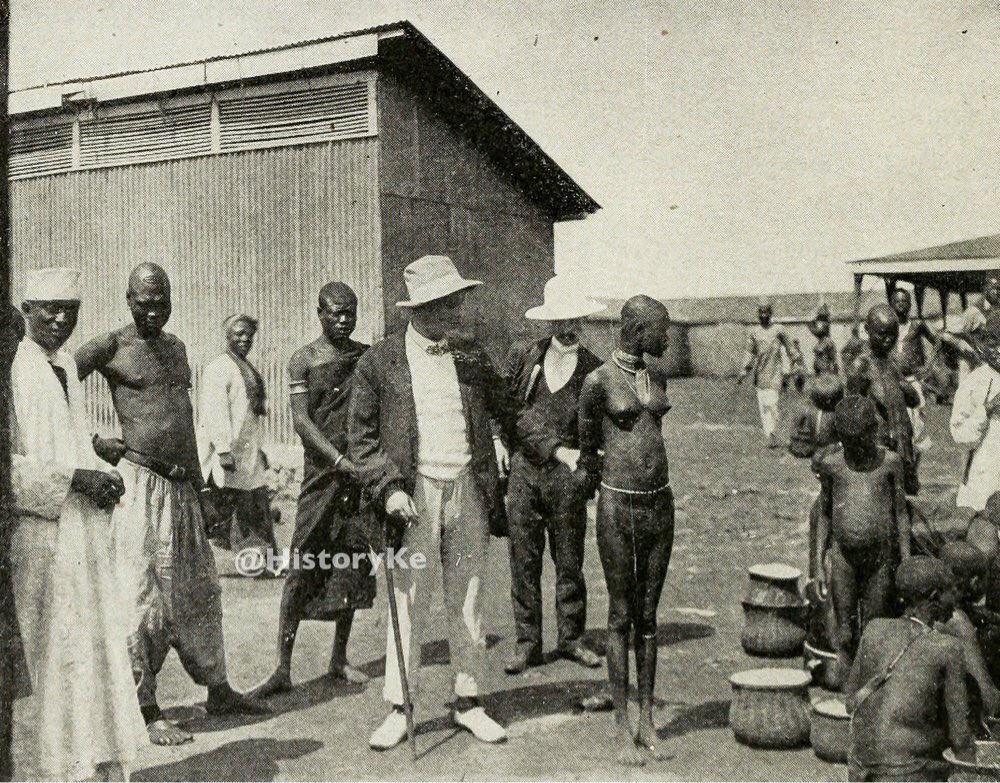
In the early colonial years, the Governors' subordinates were initially men taken over from Imperial British EA Company (IBEAC). Later on, a professional class of colonial civil servants was recruited to take up the many administrative positions opening up in the colony.
Many of the officers had hardly gone beyond the age of 30.
As such, they invariably found themselves sexually starved and lonely. That is, if they didn't have African mistresses.
As such, they invariably found themselves sexually starved and lonely. That is, if they didn't have African mistresses.
#HistoryKeThread
Krapf’s Tough Crusade
In July, 1846, pioneering missionary Ludwig Krapf struggled to attend to his ailing, bed-ridden wife.
Krapf had suffered a debilitating fever and so had his wife, Mrs. Dietrich Krapf, who was in a worse state....
Krapf’s Tough Crusade
In July, 1846, pioneering missionary Ludwig Krapf struggled to attend to his ailing, bed-ridden wife.
Krapf had suffered a debilitating fever and so had his wife, Mrs. Dietrich Krapf, who was in a worse state....

She had days earlier given birth to a baby girl at their budding Rabai mission.
Hours to her death, she asked Krapf to bury her right there at Rabai, saying she needed her remains to "constantly remind the passersby of the great object which...
Hours to her death, she asked Krapf to bury her right there at Rabai, saying she needed her remains to "constantly remind the passersby of the great object which...
...had brought the servants of the church of Christ to their country...."
Krapf would much later write that his wife "wished to be preaching to them by the lonely spot which encloses her earthly remains."
Krapf would much later write that his wife "wished to be preaching to them by the lonely spot which encloses her earthly remains."
#HistoryKeThread:
After Kinoo, westwards along the Nairobi-Nakuru highway is a place called Karûri. It was named after Agîkûyû chief Karûri wa Gakure, who actually hailed from Kangema in present-day Murang'a county.
After Kinoo, westwards along the Nairobi-Nakuru highway is a place called Karûri. It was named after Agîkûyû chief Karûri wa Gakure, who actually hailed from Kangema in present-day Murang'a county.
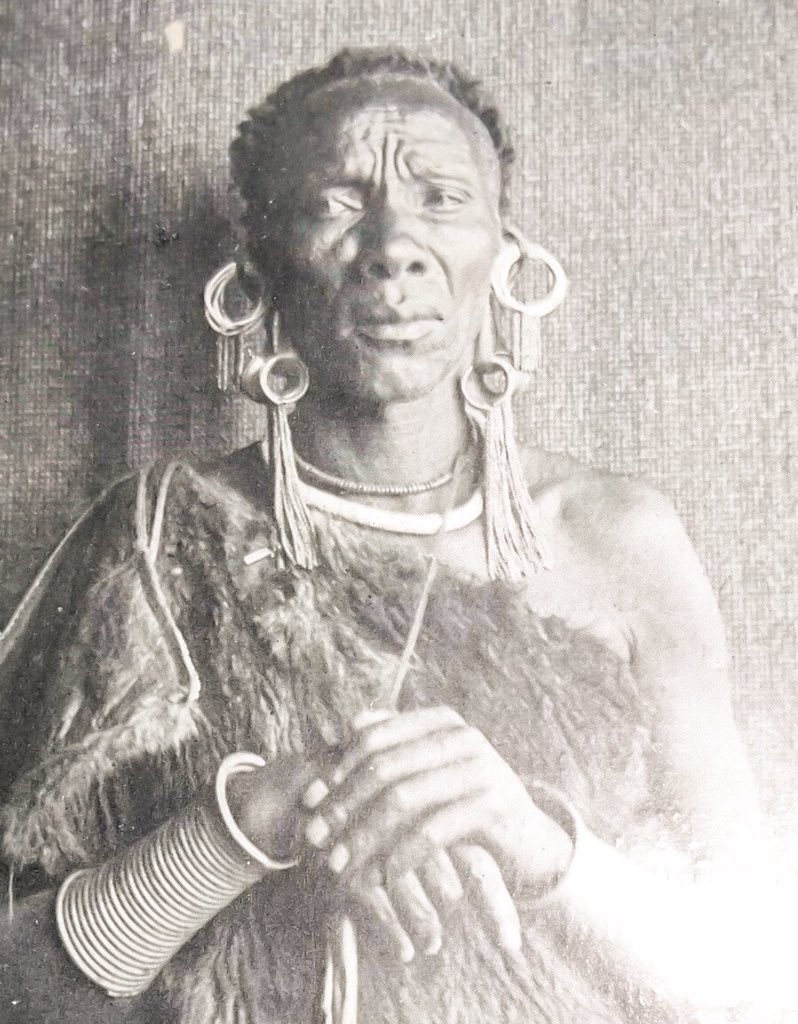
Chief Karûri made trading trips from his village, trudging with his caravan along the edge of the Aberdares towards Kikuyu mostly, and at times Kijabe and Naivasha.
Interestingly, Field Marshal Mbaria Kaniu followed the same route from Kangema to lead the #MauMau massacre at Lari.
#HistoryKeThread: In his book, The Making Of A Colony, Lord Cranworth made comparisons between various communities in Kenya.
The comparisons were made between 1908 and 1912, when the book was published.
The comparisons were made between 1908 and 1912, when the book was published.
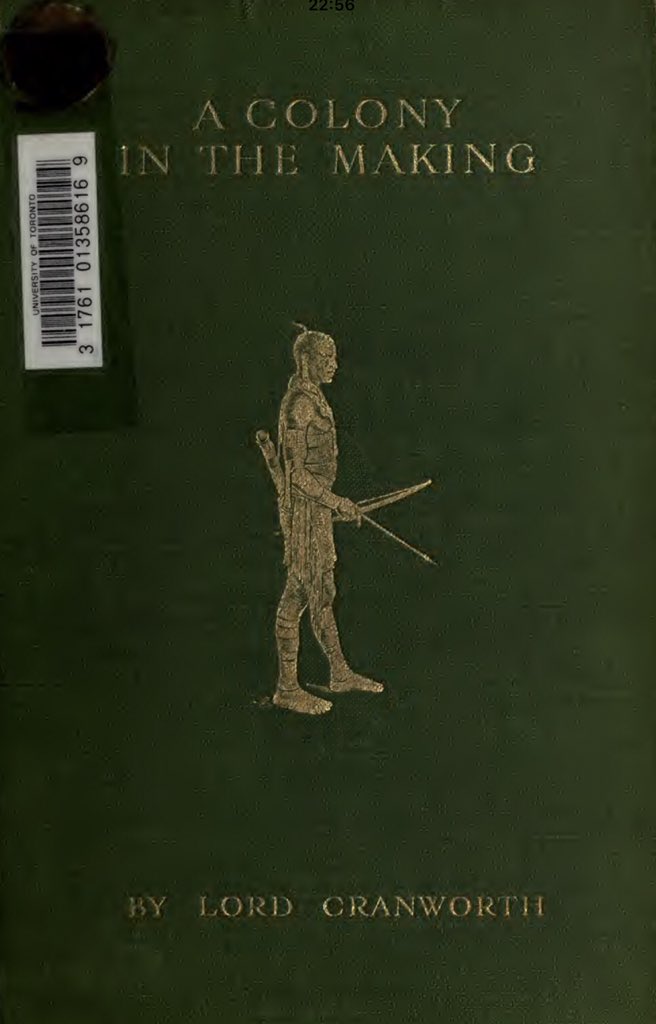
He had fond things to say about the Luo, but wasn’t half as flattering in his analysis of, say, the Agîkûyû or the Kamba.
In his observed opinion, the lakeside community was made up of hard working men.
In his observed opinion, the lakeside community was made up of hard working men.
#HistoryKeThread: The Handshake In Kano
We know that the Uganda Railway was from 1896 called so because Kisumu, which was the destined railhead, was part of Uganda.
We know that the Uganda Railway was from 1896 called so because Kisumu, which was the destined railhead, was part of Uganda.
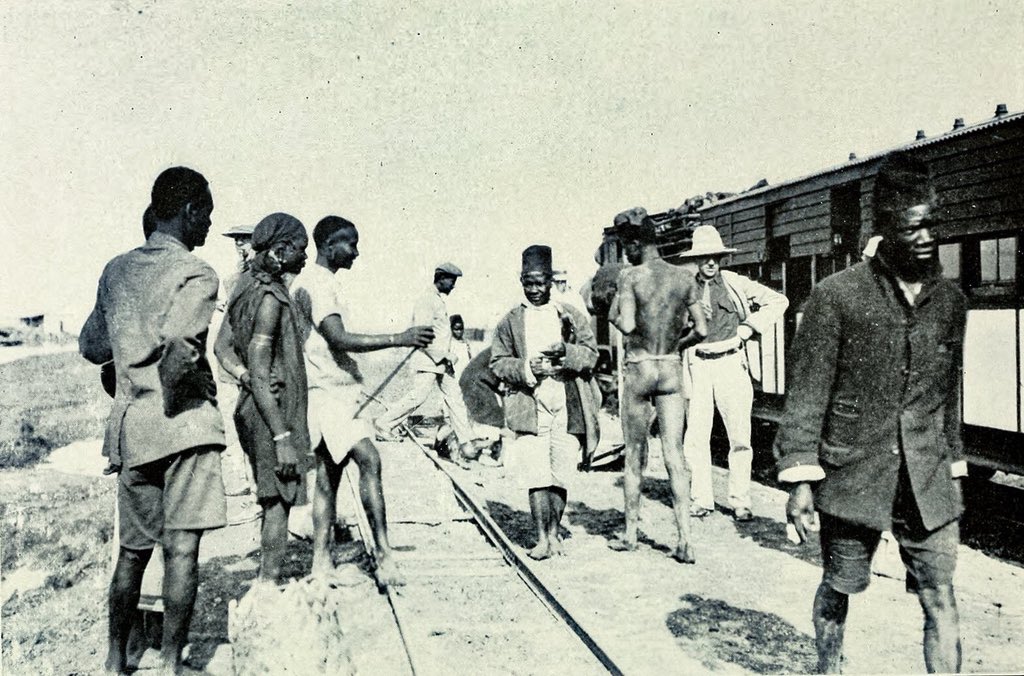
Even as part of then Uganda, large swathes of western Kenya as we know them today were collectively referred to as the Nandi Protectorate.
#HistoryKeThread #MzeeKenyattaMemorial
Sometime in 1976, James Kanyotu, the time the Head of Kenya's Special Branch, summoned an urgent meeting between him, AG Charles Njonjo, and the Head of Civil Service, Geoffrey Karîîithi. The meeting was held at Kanyotu's residence.
Sometime in 1976, James Kanyotu, the time the Head of Kenya's Special Branch, summoned an urgent meeting between him, AG Charles Njonjo, and the Head of Civil Service, Geoffrey Karîîithi. The meeting was held at Kanyotu's residence.
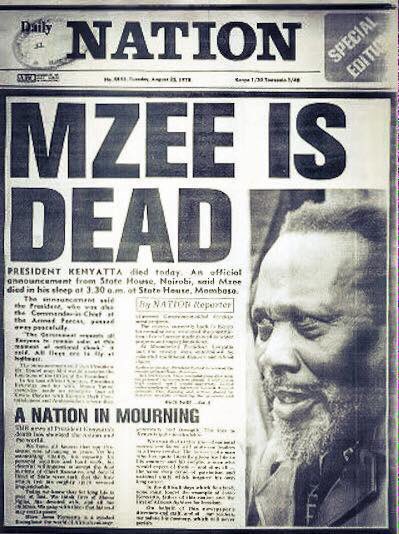
The meeting at Redhill had been triggered by Dr. Bernard's worrisome diagnosis of the man who had led Kenya since independence.
Kanyotu's sharp instincts had impelled him to act. He knew something was amiss. On the eve of the meeting between the trio, a dinner was hosted in honour of Dr. Barnard. Kanyotu was in attendance.
#HistoryKeThread At around the time of this thread, at 1030HRS twenty years ago, on 7th August 1998, guards at the rear entrance of the United States of America embassy building in downtown Nairobi waved down a truck for routine inspection. It was halted as its occupants... 
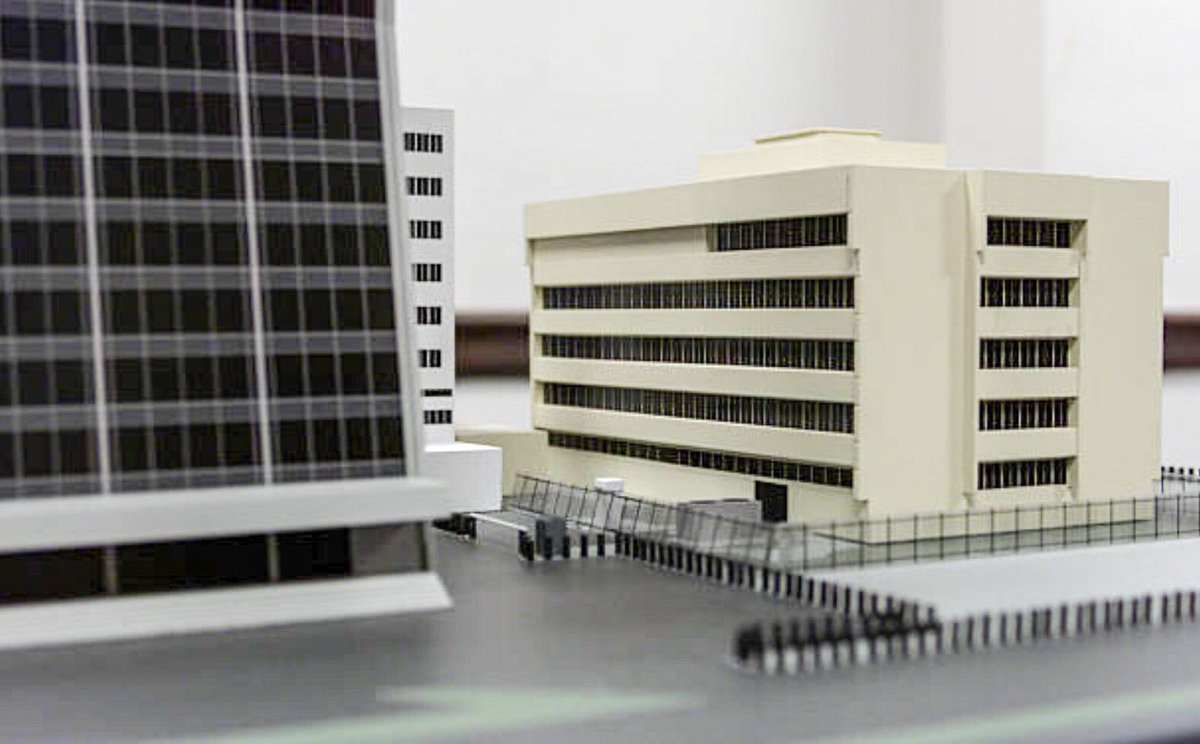
...tried to force their way into the rear entrance of the embassy building, situated at the busy junction of Nairobi’s Haile Selassie and Moi Avenues.
A brief argument ensued between embassy guards and the truck’s “arab-looking men”, who insisted they had a package to deliver...
A brief argument ensued between embassy guards and the truck’s “arab-looking men”, who insisted they had a package to deliver...
1/17 #HistoryKeThread Feature On The Wakamba 

2/17 Charles Dundas was a British administrator serving in ukambani around 1910.
3/17 This is what he once wrote of the Kamba:
1/8 #HistoryKeThread: New Year’s Eve Norfolk Hotel Bombing
1/12 #HistoryKeThread: Scotsman G.F. Scott-Elliot was a botanist and adventurer who landed in Mombasa on 1st November 1893. 

3/12 Excerpts:
1/30 #HistoryKeThread: Raila Odinga accompanied by his late son Fidel on a tour of the Nyayo House torture chambers in 2002. 

2/30 The torture chambers gained notoriety in the 1980s, when one of the most atrocious crackdowns on dissidents in Kenya by the country’s dreaded Special Branch took place.
3/30 It was the year when the then KANU regime rounded up individuals alleged to belong to the proscribed Mwakenya, an underground movement created to fight for pluralism in Kenya.
1/9 #HistoryKeThread: One of the ways in which the so-called "professor of Politics", Retired President Moi, executed survival politics was in his creative knack for appeasing various communities. 

2/9 At the dawn of pluralism in the early 90s, he went about dishing out districts as political gifts.
1/16 #HistoryKeThread: This is John H. Patterson, he of the Man Eaters of Tsavo (book) fame and engineer-in-charge of the railway bridge at Tsavo. He is pictured at camp on 10th December 1898, a day after he killed the first of two lions that terrorized... 
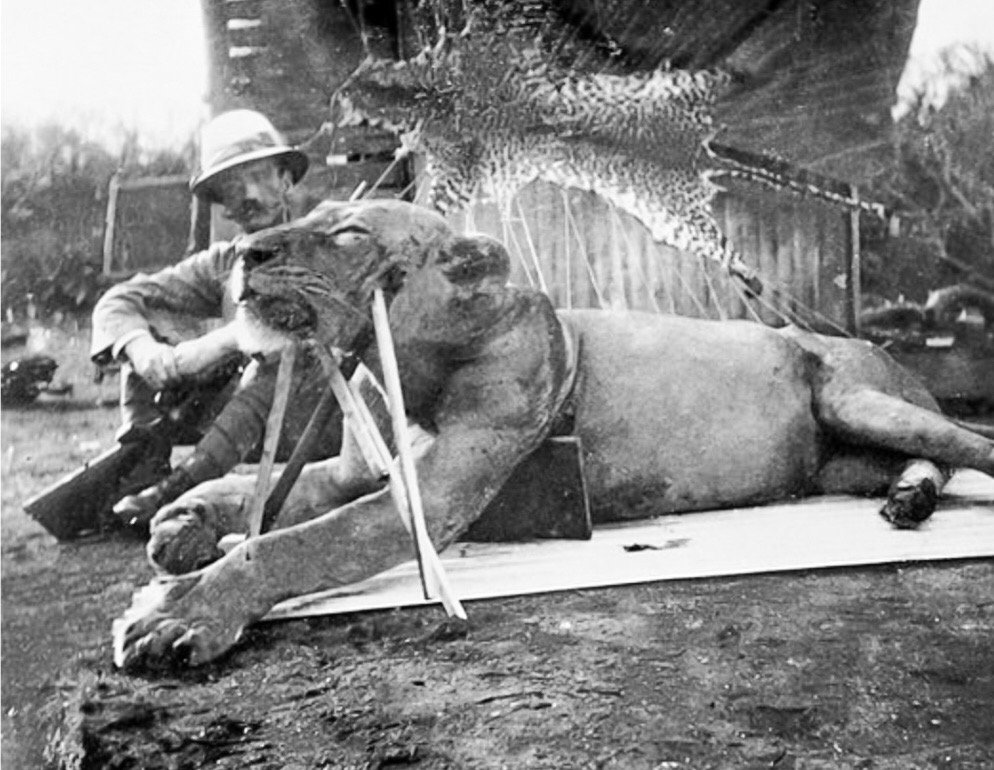
2/16 ...workers camped by the Tsavo River.
3/16 The two lions, christened The Ghost and The Darkness, instituted a reign of terror for many a night at the construction camp. In his book, Patterson noted that “between them [the lions], no less than 28 Indian coolies [labourers], in addition to scores of...
1/22 #HistoryKeThread: The Luo Of 1909 As Observed And Recorded By American “Tourists” 

2/22 Earlier in the week, I made reference to author Peter Macqueen’s book, “In wildest Africa, the record of hunting and exploration trip through Uganda, Victoria Nyanza, the Kilimanjaro region and British East Africa”.
3/22 MacQueen had toured then British East Africa on the urging of his namesake and New Yorkan, Peter Dutkevich, who accompanied him on the adventure.
1/23 #HistoryKeThread: In early 1905, Nandi warriors attacked a caravan in the Uasin Gishu plateau and made away with unspecified items. 

2/23 This was not the kind of welcome that a task force from the Zionist Congress expected. Ironically, the task force had come on a mission to scout for land in which Jews could be settled harmoniously; land that the British Foreign Office had set aside for...
3/23 ...the “Uganda Plan”.
1/7 #HistoryKeThread: Thomas Joseph Odhiambo Mboya (August 15, 1930 - July 5, 1969) and Luis de Assis Correia, co-founders of Africa-America Foundation, Kenya, flanked by some of the 81 students en route to the USA on the first charter flight airlift from... 
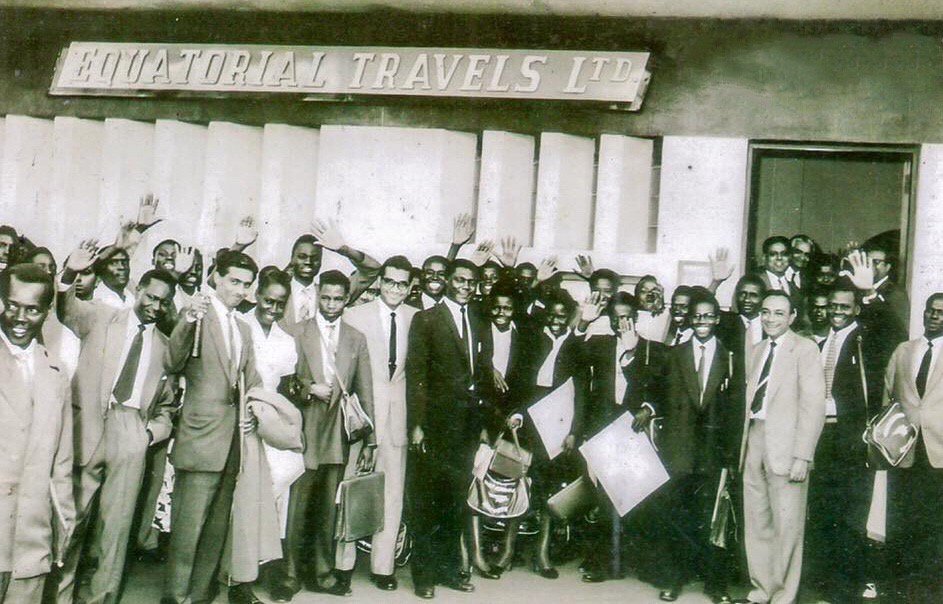
2/7 ...Embakasi Airport,...
3/7 ...Nairobi to Idlewild Airport, New York.
1/18 #HistoryKeThread: When Kenya Sparred With Egypt
2/18 Shortly after independence, Kenya was confronted with the shifta menace, a nagging war that was mostly fought in the country's north eastern province. 

3/18 The shifta war with Somalia was one that stemmed from that country laying territorial claim to parts of Kenya.
1/22 #HistoryKeThread As Christianity spread among African communities in the early 20th century, locals desired leadership of their own churches instead of being led by European missionaries, who were viewed as agents of colonialism. 

2/22 Some Africans were uncomfortable with the interpretation of some of the scriptures. On this account alone, for instance, the Holy Spirit Church, also known as the Roho Churches, broke away.
3/22 Independent churches, and even schools, began to sprout in various parts of Kenya. They had similar characteristics. For example, Africans led the worship services. Some allowed certain traditional customs, such as female circumcision and polygamy.
1/29 #HistoryKeThread: In 1945, only 15 African youths graduated from high school in Kenya. Among them was Njoroge Mungai, an Alliance High School student. 
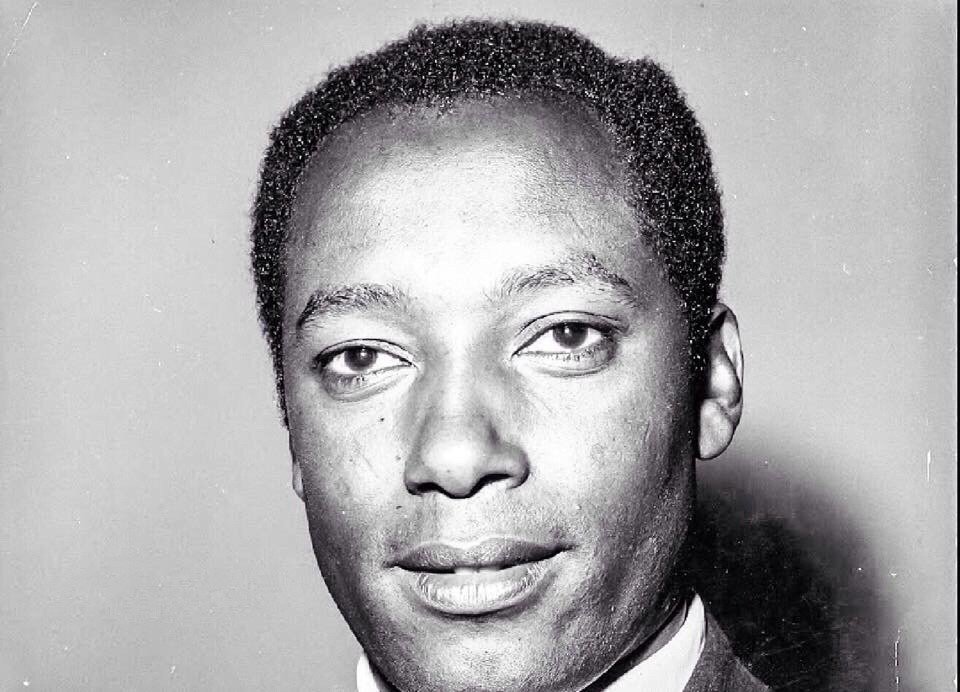
2/29 While in elementary school, Mungai had injured his foot and watched with great interest as a missionary doctor attended to his wound. Inspired, Mungai wanted to be a doctor.
3/29 At the end of his high school studies, the young man, a native of Kiambu, sought to study medicine in the United States. For some reason, the colonial government in Kenya denied him the chance.
1/53 #HistoryKeThread: Sir Harry Hamilton Johnston’s Kilimanjaro Expedition 
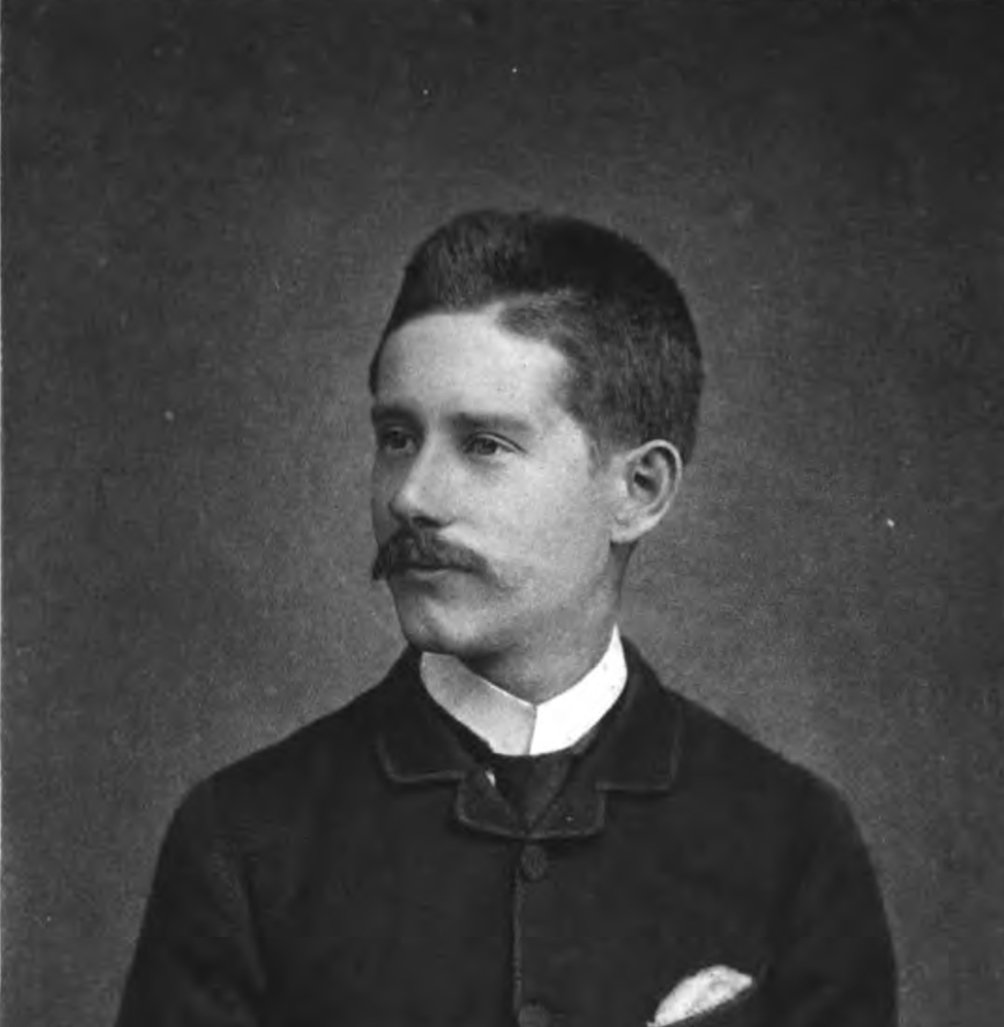
2/53 In the 19th century, there weren’t many British explorers and administrators who spent as much time wandering through the African continent as Sir Harry Hamilton Johnston did.
3/53 A Zoologist, Johnston not only spent three years administering part of Nigeria, but he was also the man who won over Nyasaland (Malawi) and Northern Rhodesia (Malawi) to eventual British crown rule.
1/16 #HistoryKeThread: At the height of a land dispute between native Africans and the Europeans in central Kenya, the British Government in 1935 set up the Kenya Land Commission under Sir Morris Carter. 
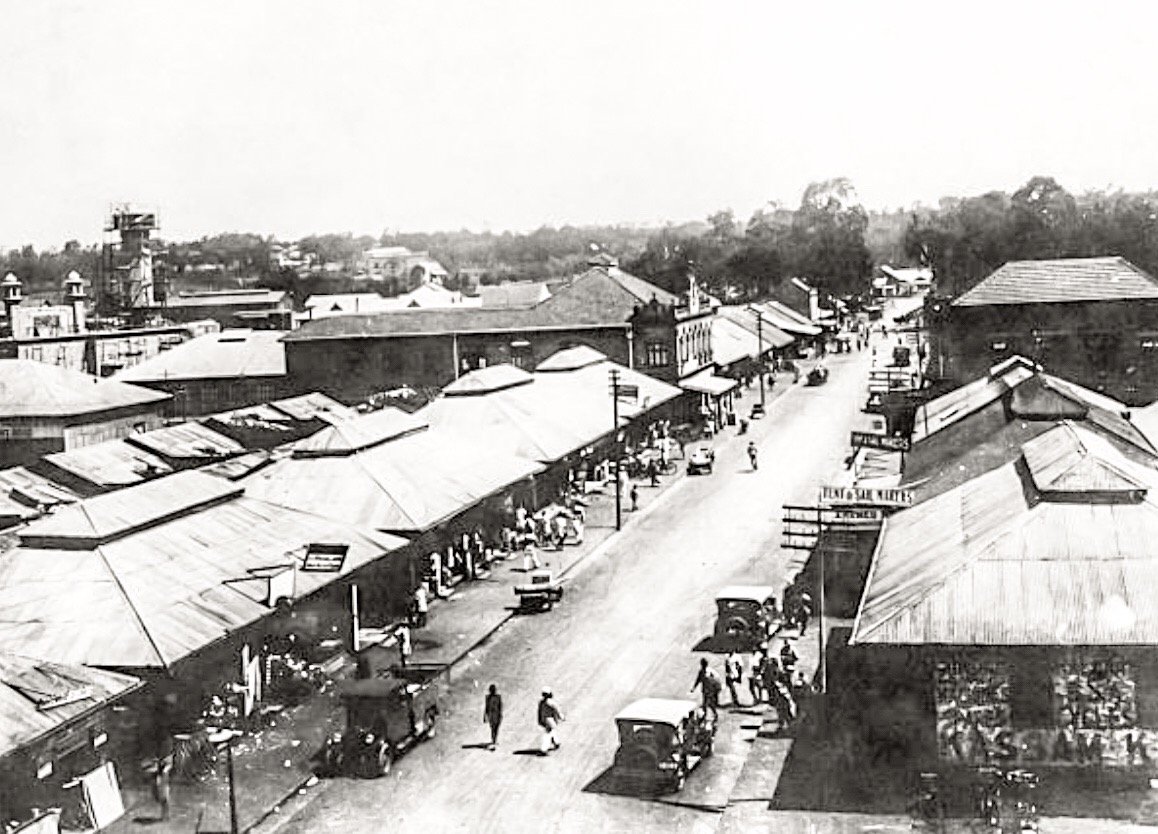
2/16 The mandate of the Commission was to examine the boundary disputes between black and white farmers and determine once and for all who owned which land.
3/16 Though other African tribes also lived around the highlands, the Commission’s main task was to find a way of appeasing the Agîkûyû without provoking open rebellion from white settlers. To this end, hundreds of different land claims were considered.


